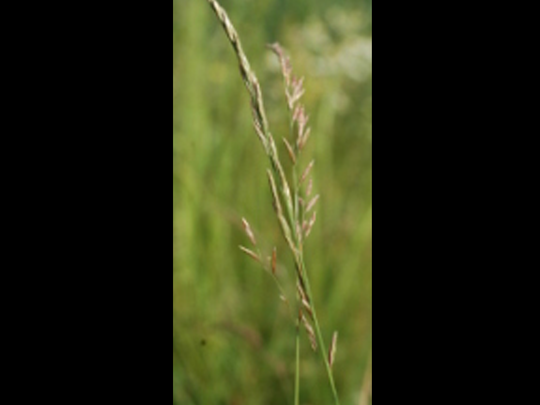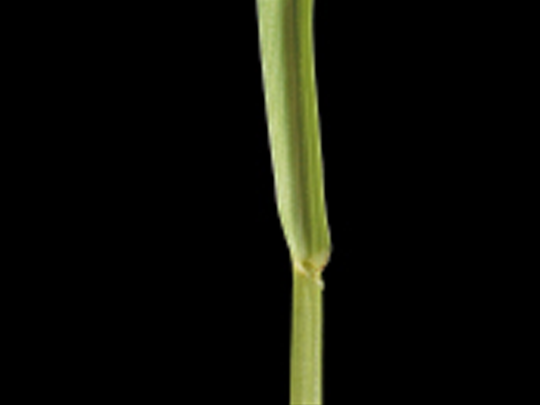Meadow fescue is a tussock-forming, perennial top grass, which sometimes produces short rhizomes. Height 80–120 cm, unbranched, geniculate stems. This winter-hardy species shoots relatively early in the spring. Flowers late May to early June. The species thrives best on nutrient-rich, fertile to moist soils. It is widespread in maritime locations, low mountain ranges and seasonally dry sites. It is relatively non-competitive and easily overwhelmed by more vigorous species. A persistent component of grass mixtures for peaty soils. With a feed value of 8, meadow fescue is one of the best fodder grasses. Commonly sown as permanent pasture grass and forage leys. Combines well with clover and alfalfa. Rapid regrowth after mowing or grazing yields 3–4 cuts per year. The winter-hardy species is resistant to fusarium and very drought-tolerant.
| Leaf | Leaf rolled in the bud, underside of leaf glossy, upper side ribbed, smooth auricles. Ligule is shorter than the leaf base, shoot base not normally red. |
| Culm | Height approx. 80–120 cm, culms unbranched, often geniculate, bright green. |
| Inflorescence | Erect, slightly curved double raceme or panicle 15–20 cm long. Two side branches on the lower node of the main axis each with 2–7 spikelets. Usually 4 spikelets at the tip of the inflorescence. During flowering the inflorescence is fanned out, otherwise tightly closed. 7–8 florets per spikelet. Short glumes, lemmas twice as long and awnless. |
| Fruit | The grain is 6–7 mm long and more slender than that of ryegrasses. The pedicel is 2 mm long, cylindrical, slender and flaring upwards. TSW 1.5–2.5 g. The caryopsis has a broad brown to brownish-black furrow running along the ventral side. |

